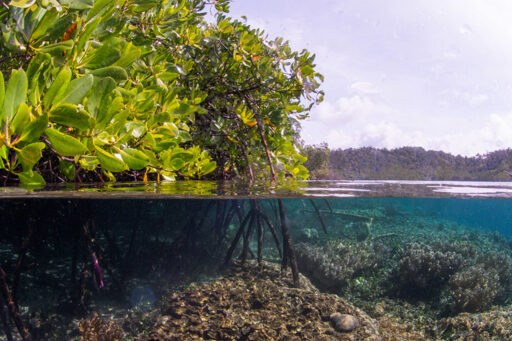Mangroves are an important lifeline for biodiversity, climate and coastal communities. Yet they are disappearing 3-5 times faster than total global forest losses, according to UNESCO. On July 26, celebrated as the International Day for the Conservation of the Mangrove Ecosystem, we present recent stories by Mongabay’s journalists on emerging threats to these critical ecosystems and the women who are leading mangrove restoration efforts across the world. Risks from tropical cyclones A recent study found that mangrove forests globally could face severe risk from climate change-intensified tropical cyclones and rising sea levels, Mongabay contributor Elizabeth Fitt reported in June. Mangroves, which typically grow in the tropics and subtropics, have evolved to be resilient against tropical cyclones. They even serve as buffers for coastlines against the resulting storm surges and strong winds. In the process, they may suffer damage, but they tend to bounce back when the storms don’t occur frequently. The study estimates that with climate change, tropical cyclones are likely to occur so frequently that mangroves won’t have enough time to recover. Mangroves are already being cleared or degraded due to pollution, agriculture and infrastructure. The added risk from climate change is a problem because the ecosystem is responsible for an estimated $65 billion worth of annual flood protection across the world while 775 million people are considered “highly dependent” on such coastal ecosystems, the study says. “The mangrove ecosystems providing the highest levels of benefits to people … are also at the highest levels of risk,” study lead researcher…This article was originally published on Mongabay
From Conservation news via this RSS feed


